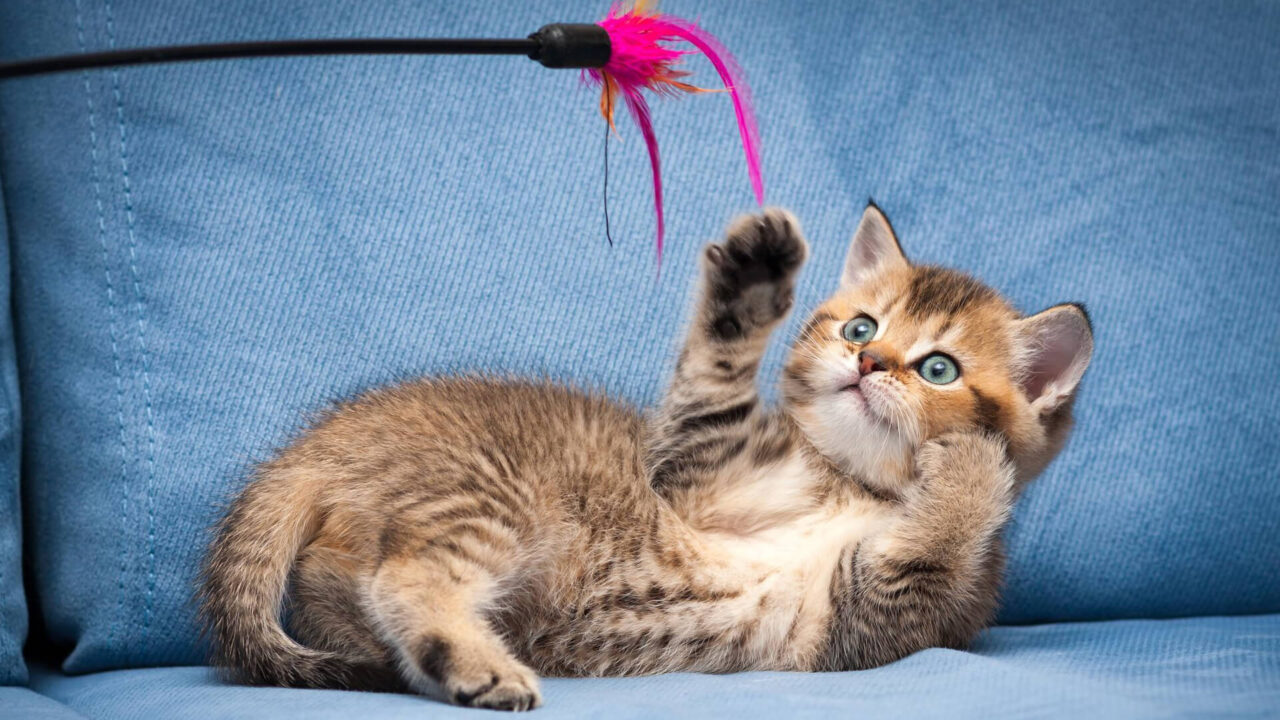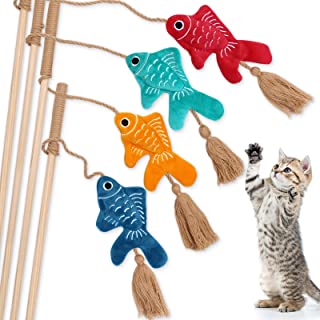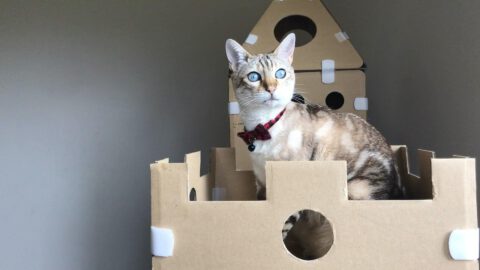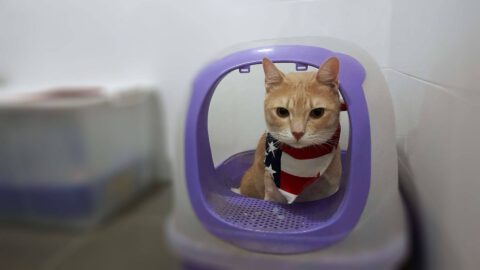Last Updated on October 28, 2021
Many people will choose a cat for companionship over other animals because they are known for being very independent. This is not to say that they require little or no interaction with you. Cats still have daily needs that should to be met to ensure good mental, emotional, and physical health. One thing that often gets overlooked with many cat owners is playtime. While some cats will be able to entertain themselves, many will not and this can lead to obesity, depression, and bad behavior. So you may be wondering; How much do I need to play with my cat?
Daily Playtime Is Ideal
Similar to dogs, playing with your cat every day is ideal. The only difference between a dog and a cat is that cats don’t require as much time. While a dog will need more movement throughout the day to burn off their energy (especially working-class breeds), cats simply need to excerpt their energy storage in small bursts. This is because a lot of a cat’s life is spent sleeping. The average adult cat will sleep roughly 16 hours a day but some may want to sleep as many as 20 hours a day. Kittens will require more sleep – especially after playtime.
How Much Time Should I Play With My Cat?
Depending on your cat’s personality, breed, and age the time frame can vary. It is best to aim for at least two 20-minute play sessions a day for each cat. This means you will have your cat being very active for almost the entirety of those 20-minutes by running, jumping, and chasing. Playing with them roughly 20-minutes after a meal will ensure your cat isn’t storing extra food as fat. If your cat is already overweight, this will also help them burn off extra calories to help them lose some of that excess fat.
How Much Time Should I Play With A Kitten?
While most adults can handle two 20-minute play sessions a day, it is best to limit a kitten to shorter play sessions of 10-minutes at a time. This is for constant running, chasing, and jumping. If you are passively playing with your kitten without them overexerting themselves, you can play with them much longer. Just be sure to let them sleep when they are read
What Ways Can I Play With My Cat?
One of the easiest ways to get a cat up and moving is to use a wand. There are plenty of cat wands on the market with different toys attached to them. You will want to find one that your cat enjoys and gets excited for. Look for wands that come with interchangeable toys to keep playtime fresh and fun. Using a bit of catnip can help get them up and active as well just be sure not to overdo it as daily use can weaken the effects of catnip for some cats.
What If My Cat Doesn’t Like Toys?
Some cats will not take to wands or any toys for that matter. Maybe they are a bit older or they just have no interest in any of the options you have given them. When this is an issue, you can use treats or food and make it an exercise activity for your cat before eating. Have them go up and down the stairs a few times with you for treats. Instead of feeding them in the same spot, have them walk around the house with your a few times before you place their meal down. This will ensure they get some exercise and do not become overweight. Training your cat to walk on a leash is an often overlooked option. If your cat can take to wearing a harness, walking them around your yard can be a great bonding experience as well as a healthy exercise you can both enjoy together.
Why Is Daily Exercise Important?
Cats need to be active daily to ensure they do not become overweight. Being active also lowers their risk of many diseases and types of cancer, just like in humans. It also supports a healthy balance of mental and emotional health which will reduce the likelihood of depression, anxiety, FIC, and general behavioral issues.









